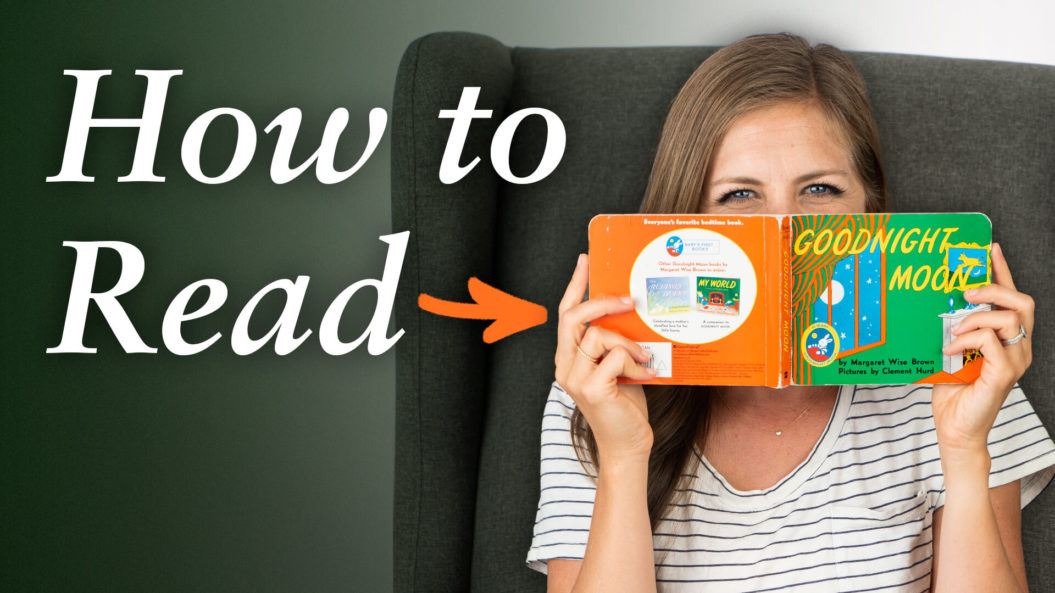Have you ever thought to yourself, “Why is the book Goodnight Moon so popular?
Why does everyone read it? It seems so boring!” Today I want to explore the book Goodnight Moon by Margaret Wise Brown with you and show you the important skills it can develop for children when it is read intentionally.
Some books are great for teaching rhyming or patterns, and this book actually can be used to teach both of those skills, but it’s also giving children the opportunity to build other significant skills that you might be missing when you first read it.
First, this is a wonderful book to use for developing visual-spatial processing and short-term memory skills.
I know these are complicated terms, so let me explain their importance to you. Visual-spatial processing is an extremely important cognitive skill and allows us to do all kinds of things like merge into traffic, be able to read maps or use a table of contents correctly and allow us to understand the order of math equations and how to align numbers to properly compute. Additionally, this skill, as well as short-term memory, is what allows children to see the letter F up on the wall in their classroom, hold the image in their head and be able to recreate that symbol onto a blank piece of paper. In other words, these are extremely important cognitive skills, and this book does an amazing job building them for the children.
*Affiliate Link (No extra cost to you)
The first part introduces things in the room and the second part says goodnight to them. The book goes back and forth between full-page, color illustrations, and black and white isolated images. Then, when the narration switches to saying goodnight, the images introduced in color are now said goodnight to in black and white and vice versa. What this is doing is constantly asking the child to be able to place the item back into the full picture of the room, or be able to picture the greater context in which that item sits in the room. For example, the kittens and the mittens are introduced in a full two-page color illustration. Later, though, the narrator says goodnight to the kittens and mittens with isolated black and white images. This asks the child to be able to visually contextualize where those items are in the room, asking them to use visual-spatial processing and short-term memory skills.
Additionally, though, this book can be used to develop important social and emotional skills for the children.
At the end of the book, the narration slightly shifts out of its pattern. On the second to last page of the book, the reader sees and full two-page black and white illustration, breaking the visual pattern of the book. But it also breaks the narrative pattern by saying goodnight to things that have not been introduced to the reader. The page says, “Goodnight stars, goodnight air.” This page brings the reader out of the room and into the greater context of the room: it is under the stars and surrounded by air.
This page works to make the context of the room and the rabbit relatable to virtually every reader because every reader’s room is also under the stars and surrounded by the air. It is calming. It is a page that says, “we are here, just like you.”
Then we turn to the last page of the book, “goodnight noises everywhere,” with the lights down low and the rabbit falling asleep. Because the reader now relates to the greater context of this room, the reader can begin to relate to the rabbit and his actions.
This, perhaps, is one of the first books the child has interacted with and is asked to relate to the character. Not only is this an important skill for future reading, but it is a massively important social and emotional skill.
The ability to relate to someone, to recognize similarities in the midst of differences is what makes people compassionate and humble.
So when you’re reading this book, just add in questions like, “Can you find that in the picture?” or “Do you remember where the kittens are in the room? What are they next to?” And later, “Is your room under the stars? Is there air around your room? Do things get quiet for you when it is bedtime?”
Questions like these start to use the book as a tool to do more than gain language skills. And aren’t the kids worth it? They deserve time with us that is deep and thoughtful and enhances important skills that they will use for a lifetime.
So, if you’re in the classroom or at home, let’s read good books really well. Let’s ask good questions and have important conversations. Let’s make reading time a time you and the children look forward to.
